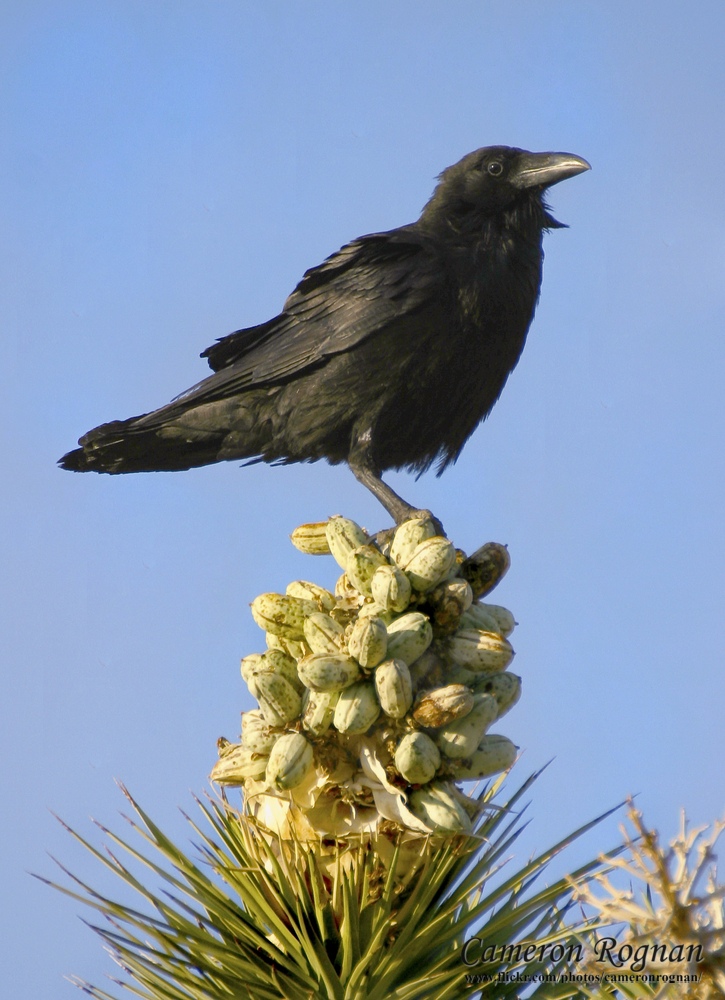Common Raven
(Corvus corax)
The common raven builds large stick nests sticks at the tops of trees, utility poles or on cliff ledges (in the Red Cliffs Desert Reserve, most nests are on cliffs). They nest from April-June, and incubation lasts 18-21 days. The young can fly at 5-6 weeks of age. Ravens are highly opportunistic hunters/scavengers. Their diet consists of consists of insects, seeds, fruits, eggs, reptiles, dead animals, and garbage. Their feeding habits are a learned behavior passed on to young ravens from adults.
As members of the Corvid family, ravens are very smart birds and can quickly learn feeding behaviors. Unfortunately, some ravens may learn to target desert tortoises, which can be an easy prey when they are young and still have a soft shell. In parts of Southern California, raven predation on desert tortoises has been well-documented, and up to 250 tortoise carcasses have been discovered at a single raven nest site during a five-year period.
Although they are a native species, raven populations have increased dramatically in the Mojave desert over the last several decades. Human subsidies, such as landfills, artificial reservoirs, and utility poles (good perch sites) have all made conditions more desirable for ravens. In the Red Cliffs Desert Reserve, there is increasing concern that ravens may become an issue for hatchling desert tortoises. Reserve Biologists began an annual raven monitoring program in 2015 to keep track of raven nests and document predation on desert tortoises. So far, we do not believe ravens are having a significant impact on tortoise populations. However, with the continued growth of Washington County, it is possible that this threat will increase in the future.
Please do your part in minimizing the threat that ravens pose to desert tortoises and other wildlife in the Reserve. Always pack out your garbage and keep your trash can lids covered.
